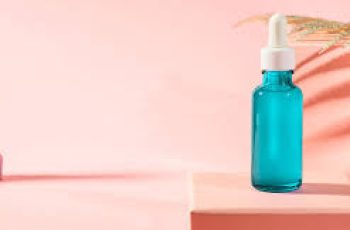
Can I Sleep with Salicylic Acid on Face?
If you’ve suffered from a blemish in the past, chances are you’ve used a product containing salicylic acid, whether you realised it or not. One of the most used beta hydroxy acids, salicylic acid has gained a reputation for effectively combating frequent breakouts and acne prone skin.
The question is, can this potent ingredient be used for on the face overnight? Will it still deliver the results you want or perhaps it’ll be too harsh for the skin leading to a flare-up in dryness, flaking patches of skin, and irritation. Let’s investigate how this ingredient works and find out if you can sleep with salicylic acid on your face.
Don’t forget, if you wanted to know more about salicylic acid and how it works on the skin you can check out our dedicated blog post over on The Beauty Insiders.
Can you leave salicylic acid on your face overnight?
Yes, you really can! You can use salicylic acid twice a day if required, those with a skin type that is oily and prone to breakouts will benefit from using the BHA most. If you find yourself having a dry skin type that suffers from the occasional spot, it may be a case of finding a product that doesn’t remain on the skin for too long and you should avoid leaving it on the face overnight all together.
If you have previously used salicylic acid and your skin has built a tolerance for it
As for serums and moisturisers, you’ll find that their formulas will often contain salicylic acid of 1% to 2% potency which is considered low enough to leave on the skin overnight and rinse off come morning. I would advise strongly against using any formulas that are medical or professional grade of 15% or higher for overnight application. These are for skin treatments, such as chemical peels, and are best used for a boost in restoring the complexion to vibrant, clear, and blemish-free clarity.
Does salicylic acid help overnight?
Yes, salicylic acid can help overnight with any concerns you have with spots and acne. Thanks to the exfoliating abilities, antibacterial and anti-inflammatory it can combat any flare-ups of blemishes that are active on the surface of the skin, as well as working in the lower layers to prevent any potential breakouts from reaching the surface.
You’ll find that with serum products containing salicylic acid that the percentage of the BHA will higher which can cause some drying effects on the skin. Therefore, it’s considered a good idea to team any salicylic acid skincare product with a hydrating ingredient, like hyaluronic acid to keep the skin surface plumped, hydrated, with a youthful bounce.
How long do I leave salicylic acid on face?
This is very much dependant on the product you use, as they all remain on the skin for different amounts of time. If you are just introducing salicylic acid into your daily routine, it may be a good idea to start with using an exfoliating toner that is applied to the skin by soaking cotton discs and sweeping the formula across the face. This, as well as a cleanser enriched in salicylic acid is another option as both products are either rinsed off the face or absorb quickly.
If it’s a serum, face oil or moisturiser you decide to use, these generally remain on the skin for a considerably longer amount of time. It is advised by some skincare experts that using a salicylic acid product overnight enables the ingredient to work without being disturbed with the exposure to free radicals, such as pollution or UV rays.
Should I use salicylic acid in the morning or night?
You can use salicylic acid twice a day, in the morning and at night. By doing this you are keeping the skin clean and dirt free whilst combating the spot causing bacteria. Using the BHA twice day is really boiling down to your skin type, oily, acne prone skins in particular benefit from salicylic acid most of all.
For those with a slightly more dry and sensitive skin type, its best to avoid using salicylic acid all together as it can be too much and can sometimes strip the skin of the essential oil it requires to remain healthy. For your skin barrier to function correctly, it needs the right amount of water and oil ensuring it is strong enough to ward off any damage caused from free radicals. By removing this oil, you will weaken your skin barrier and kick start the sebum (the natural oil found in the skin) production leading to a flare-up in spots, blackheads, and breakouts.
When does salicylic acid start working?
You can expect to see a difference in the improvement of your breakouts after consistently using a salicylic acid enriched product for 6-8 weeks. If you find you have passed that amount of time and have seen no difference in your skin, the next steps would be to consult with a doctor or dermatologist to find alternative treatments which will hopefully be more effective.
Is it normal to breakout after using salicylic acid?
Yes, it is perfectly normal for the skin to suffer from a breakout after using salicylic acid. This breakout is also known as purging and occurs because of how the BHA works on the skin. With salicylic acid being oil-soluble it can penetrate the lower layers and unclog the pores of any excess sebum, dirt, bacteria, and other impurities. This results in all the “gunk” being pushed to the surface of skin all in one go resulting in flare-up in acne like breakouts.
Does salicylic acid remove blackheads? Yes, it certainly does! Salicylic acid is one of the most used ingredients for combating blemishes and acne prone skin. It can break down the impurities, remove excess sebum, and slough away the build-up of dead skin cells that can often sit on the surface resulting in a breakout in blackheads, whiteheads, and spots. There you have a little more detail about whether you can sleep with salicylic acid on your face. Don’t forget if you have any more questions, come and give Procoal’s Instagram a follow, you’ll find me in the direct messages.
DQH Can I use salicylic acid first and then vitamin C?
It’s easy to create a skincare routine, but knowing how to use it is another thing entirely. In most cases, if you’re not getting the desired skin results, it could be due to the layering of conflicting ingredients. So, is it possible that salicylic acid and vitamin C are such ingredients? Or are these active ingredients the duo that’s been missing from your skincare routine? If you want answers, stick around because today we are going to explain the benefits of salicylic acid and vitamin C and how they can be used in your daily life.
What are the benefits of salicylic acid for skin?
Salicylic acid is one of the most commonly used beta hydroxy acids and is favored by many people with oily, acne-prone skin. This acid is derived from willow bark, and unlike its water-soluble relatives (called alpha-hydroxy acids), salicylic acid is oil-soluble, which means it can penetrate deeper into the lower layers of the skin. Once it reaches the lower layers, it can help unclog pores of excess sebum, dirt, bacteria, debris, and impurities. This results in clearer skin tones and greater definition.
Not only does salicylic acid benefit the underlying layers, but the outer surface of the skin benefits as well. When applied to the skin, salicylic acid removes the buildup of dead skin cells. This is accomplished by breaking the bonds that hold dead cells to the surface. Over time, this can cause the complexion to look dull and prone to acne, blackheads, and other blemishes.
If you’d like to learn more about salicylic acid and how it can improve your skin, check out this dedicated blog post from a beauty insider.
What are the benefits of vitamin C for skin?
Vitamin C is considered one of the most powerful antioxidants, which means it is very effective at fighting free radicals and preventing them from causing further skin damage. Examples of free radicals include pollution, central heating, UV rays and harsh climate. They attack proteins, fats and cell membranes as soon as they come into contact with the skin, causing signs of premature aging such as fine lines and wrinkles as well as hyperpigmentation, flaky patches of skin and loss of elasticity.
Many people usually prefer to use vitamin C in their morning routine as this ingredient gives the complexion a radiant glow. You’ll also find that vitamin C can target areas of hyperpigmentation, plumping the skin and reducing the appearance of fine lines and wrinkles.
The thing about vitamin C is that there are a lot of outdated studies going back to the 1950s that describe vitamin C as an unstable skin component. Thanks to improvements in modern technology, this is no longer the case as all products now contain a stable form of vitamin C.
Visit The Beauty Insider to learn more about vitamin C. So please check out our blog post.
Can I use salicylic acid first and then vitamin C?
Yes, you absolutely can. In fact, it’s thought that using salicylic acid before using vitamin C ensures it penetrates faster and works faster.
This is an efficient way to utilize two power sources, and the reason has to do with pH. For example, the skin’s natural pH is about 4.7, making it slightly acidic. Salicylic acid and vitamin C are also both acidic, and you’ll find that vitamin C is absorbed quickly into the skin. Therefore, using salicylic acid beforehand can increase the acidity of the skin and allow vitamin C to penetrate into the skin faster.
While this is considered an effective way to combine two powerful ingredients, you need to be aware of your skin type and how it reacts to certain active ingredients. Even people with perfect, normal skin can experience skin sensitivity and irritation. Therefore, always consult a doctor or dermatologist before using any new products on your skin.
It’s also important to follow skin application rules. In this case, you need to use the product correctly to ensure you get the best results for your skin. If you’re not sure what I mean, the basic rule for skin is to start with the thinnest consistency and work your way up to the thickest consistency. This prevents a barrier from forming on the surface, preventing other active ingredients from penetrating the skin.
Can I use salicylic acid at night and vitamin C in the morning?
Yes, absolutely, this is considered the most effective way to get returns without any adverse side effects. This is because there is enough time between applications to ensure that the skin’s pH levels return to balance.
You’ll also find that Vitamin C is rich in antioxidants and is perfect for use in the morning to ensure your skin is protected and looking its healthiest. Due to the small size of salicylic acid molecules, it is an acid that is able to reach the deepest parts of the skin. While this is effective at keeping skin clear, it also increases the risk of irritation and photosensitivity. Therefore, many people prefer to use powerful BHAs in their evening routine without exposure to UV rays, pollution, or harsh weather.
Warning: If you avoid using sunscreen every day, none of these ingredients will do what your skin needs. The combination of chemical peels and powerful ingredients increases the risk of further damage to the skin’s surface. Use SPF 50 every day to keep your skin protected and your lipid barrier healthy, even on cloudy days, keeping your skin in top condition.


